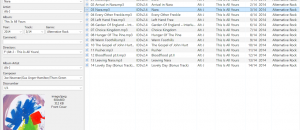One day I was planning to transfer some data from one external hard disk drive (HDD) to the other, but when I hooked them up to my system, it sent chills down my spine as one of the drives didn’t show up in Windows Explorer! I opened the “Disk Management” system to find what was going on. To my surprise, both external HDDs were present, but one of them without a drive letter. This meant both drives were okay but I could not access one of them.
You might have even received an error message from Windows that says, “This disk is offline because it has a signature collision with another disk”. You might have seen it when you tried to use the “Disk Management” applet. However, the million-dollar question is: Can I access or mount this drive again without losing existing data via formatting? The good news is: Yes, you can since I have figured out how to do that, and in this article, I am trying my best to tell you about it (hopefully) without using abracadabra.

Windows saves a sequence of numbers, known as a disk signature or a unique identifier, on every disk it uses to tell one disk apart from another. If you connect a disk that has the same signature as an already connected one to your system, Windows will deny assigning it a drive letter; hence, you will fail to access the disk.
WARNING: You are going to use command line interface (CLI) here (as opposed to mouse-clicks on graphical user interface or GUI). I recommend that you use it only if you are comfortable enough with it. If something goes wrong, it can mess up your system including a permanent hardware and/or software damage and loss of data. Backup your system/data before you proceed if it’s important to you. Use this method to change the disk signature of external HDDs only where you don’t have any operating system installed. But like I say always; look before you leap, and you should be fine!
Open a command prompt as administrator. To do this in Windows 7, click the Windows Start menu (the round Windows icon on the left bottom corner), type cmd in the Start menu ‘Search programs and files’ box (in Windows 10, it is ‘Type here to search’ box), right click the cmd.exe item that appears at the top of your menu (or Command Prompt in case of Windows 10), and click the line Run as administrator. A dialog box will pop up asking for permission (UAC or “User Access Control”), and you require to click Yes to open a black “Command Prompt” window. The title bar of the window will tell you that you are running it as “Administrator”. You need to do this even if you are already logged in as administrator, since on Windows 7/10, administrators run with reduced rights by default.
You should now be able to see a ‘C:\windows\system32>’ prompt (if your system is in drive C). Type diskpart, and hit Enter.
When the system is ready, it will issue a ‘DISKPART>’ prompt. Type list disk, and hit Enter. This will list all the disks that are currently added to the system. The disks will not have the usual names and labels that you’re familiar with when you use the Windows Explorer interface; so, you must recognize them by their sizes. You may note that it lists the physical disks indeed, and not the partitions that are assigned drive letters. This means that if you have 2 physical disks with 3 partitions on each so that you have drive letters, say, C, D, E, F, G and H, only ‘Disk 0’ and ‘Disk 1’ may be listed.
Type select disk x (where x is the number of the disk like 0, 1, 2…), and hit Enter. When you type (say) select disk 2, ‘DISKPART’ displays, ‘Disk 2 is now the selected disk.’.
Type uniqueid disk, and hit Enter. The disk’s signature will now be displayed.
To change the disk signature, type uniqueid disk ID=[NEW SIGNATURE], and hit Enter where [NEW SIGNATURE] stands for the new identifier you want for the disk (without the square brackets). If you are unsure how many digits you should give your disk to get it a new identifier, try changing only one digit of the current signature (e.g., increasing or decreasing it by 1). Now, you may have a dilemma here. When you come across this problem on your system, you don’t know which of your existing external disks has a signature that collided with the one that Windows refused to mount. To not to cause a new signature collision in trying to solve your current problem, you disconnect all external drives, connect one at a time, use ‘DISKPART’ to find its signature, write down the signature somewhere, disconnect it, add the next one to the system, and repeat the procedure. This way you identify the disks with identical signatures in due course.
When you are at the ‘DISKPART>’ prompt, you can type help (and hit Enter) to get a list of commands. Typing help followed by the command (and hitting Enter) typically offers more info about that command. For instance, you may type help uniqueid disk, and hit Enter, which will give you more information on how this command works.
To quit ‘DISKPART’, type exit, and hit Enter. Type exit again, and hit Enter to quit the “Administrator: Command Prompt” window.
Once the disk signature has a unique identifier, Windows will assign it a drive letter, and be able to mount it. You can open Windows Explorer to verify it (a reboot may be required). Also, you may check it out from the “Disk Management” tool by typing diskmgmt.msc in the “Run” dialog box that pops up when you hit Win+R, and clicking OK (or pressing Enter). The ‘invisible’ disk is visible again! No data loss that you were afraid of, no formatting that you had always hated.
I have tested it in Windows 7 Professional 64 bit and Windows 10 Enterprise 64 bit. It is likely that it may work in the other versions of Windows.

 Email article
Email article



